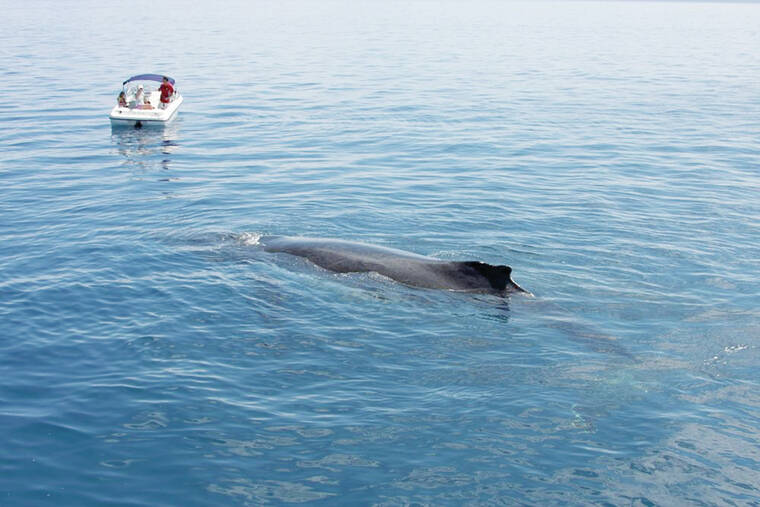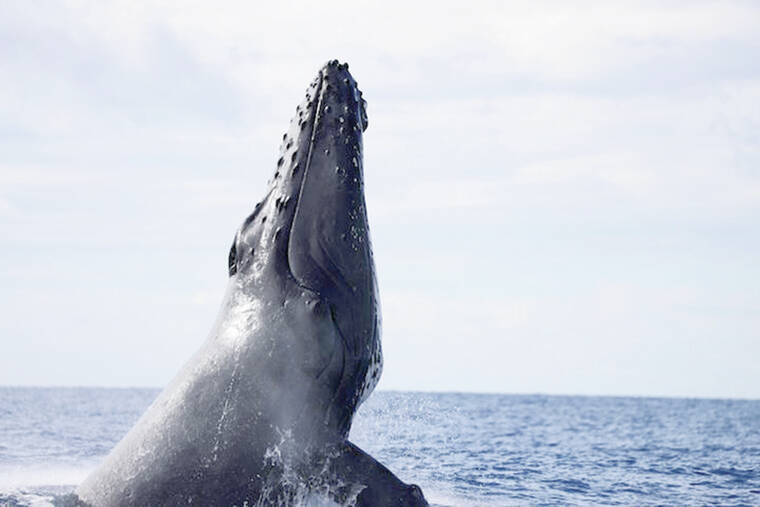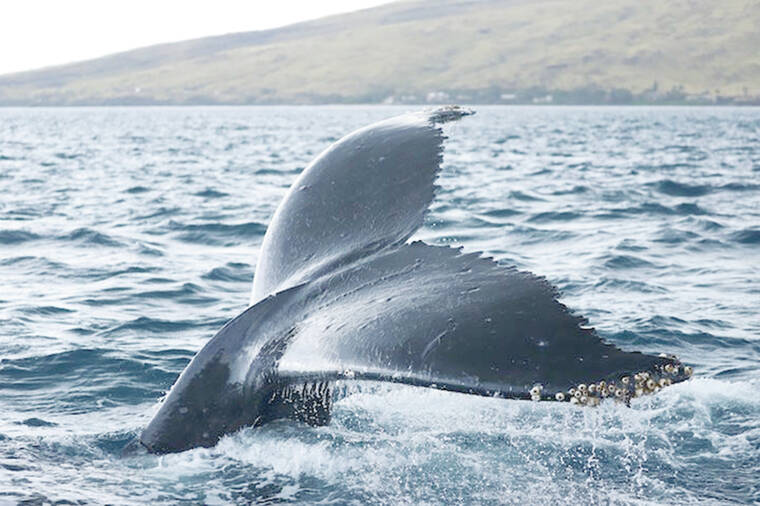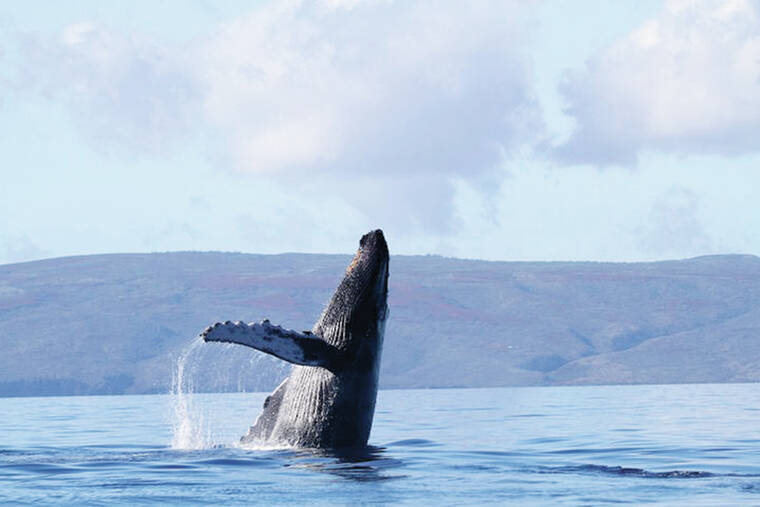PORT ALLEN — New speed recommendations for vessels operating near humpback whales haven’t made waves for Kaua‘i tour-boat companies.
The research-based pointers, announced by the state Department of Land and Natural Resources on Monday, suggest boats’ transit speeds should be 15 knots or less when around whales.
But personnel from Holo Holo Charters and Blue Dolphin Charters, which operate from the Port Allen Marina Center and Port Allen Small Boat Harbor, don’t believe the announcement will substantially change their existing practices.
“During our whale-watching tours, we’re generally going less than 15 knots (already),” Blue Dolphin General Manager Shaye Donnelly-Clarke told The Garden Island this week.
Other DLNR recommendations include reducing speed to six knots when within 400 yards of whales, posting a lookout and paying close attention to the time of day and time of year of sightings.
Whales visit Hawaiian waters to calve from December through early spring, as a rule.
“We don’t operate any specific whale-watching tours, but all our tours include whale-watching this time of year,” Holo Holo General Manager Chandra Bertsch said. “You literally can’t be on the water without seeing some activity.”
Like Donnelly, Bertsch reported her company’s current protocols effectively match the guidelines refined by DLNR, the National Oceanic and Atmospheric Administration, the Pacific Whale Foundation and business and community stakeholders.
Years of study have shown humpback whales change direction when approached by vessels at higher speeds, indicating discomfort, according to DLNR.
The animals’ speed, dive and respiration rates change as well.
“We’ve been saying for years now, how important slower and more-prudent speeds are,” Ed Lyman, a Maui-based specialist with the Hawaiian Islands Humpback Whale National Marine Sanctuary, said in a press release.
Lyman, who participated in the disentanglement of a distressed whale off Kaua‘i last month, likened a fast-moving vessel near humpbacks to a speeding driver in a school zone.
“Everyone wants to avoid a whale strike, so these recommended speeds will help mariners too,” he said.
Lyman’s statement coincided with another Monday announcement from NOAA, which reported a dead whale calf found off O‘ahu on Feb. 6 was likely killed by such a collision.
More than 120 strikes have been reported near the main Hawaiian Islands since 1975, according to the sanctuary’s website.
“It’s to protect the marine life,” Donnelly-Clarke said. “The humpback whales, the spinner dolphins, they’re all really important for our ecosystem.”
Taking the helm
Donnelly-Clarke has been the general manager of Blue Dolphin Charters for just one month.
The company owned by her father, Terry Donnelly, announced her promotion in late January.
“Shaye has learned every aspect of the business by participating in the daily activities in all sectors,” Terry Donnelly said in a press release. “She has fresh, new ideas, organization, and PR skills to benefit the company and the community.”
Donnelly-Clarke is a Kaua‘i High School graduate and PADI-certified scuba diver with a degree from the Shidler College of Business at the University of Hawai‘i. She worked for CPA firms on O‘ahu and Hawai‘i Island before returning home to Kaua‘i to work in the family business.
Donnelly-Clarke resides in ‘Ele‘ele with her husband and two children, Beau and Olivine.
•••
Scott Yunker, reporter, can be reached at 245-0437 or syunker@thegardenisland.com.






How about concern for swimmers? I’ve long maintained that kite surfers, who exceed 15 knots even in a light wind, do not belong near shore with swimmers. How about some limitations, DLNR?